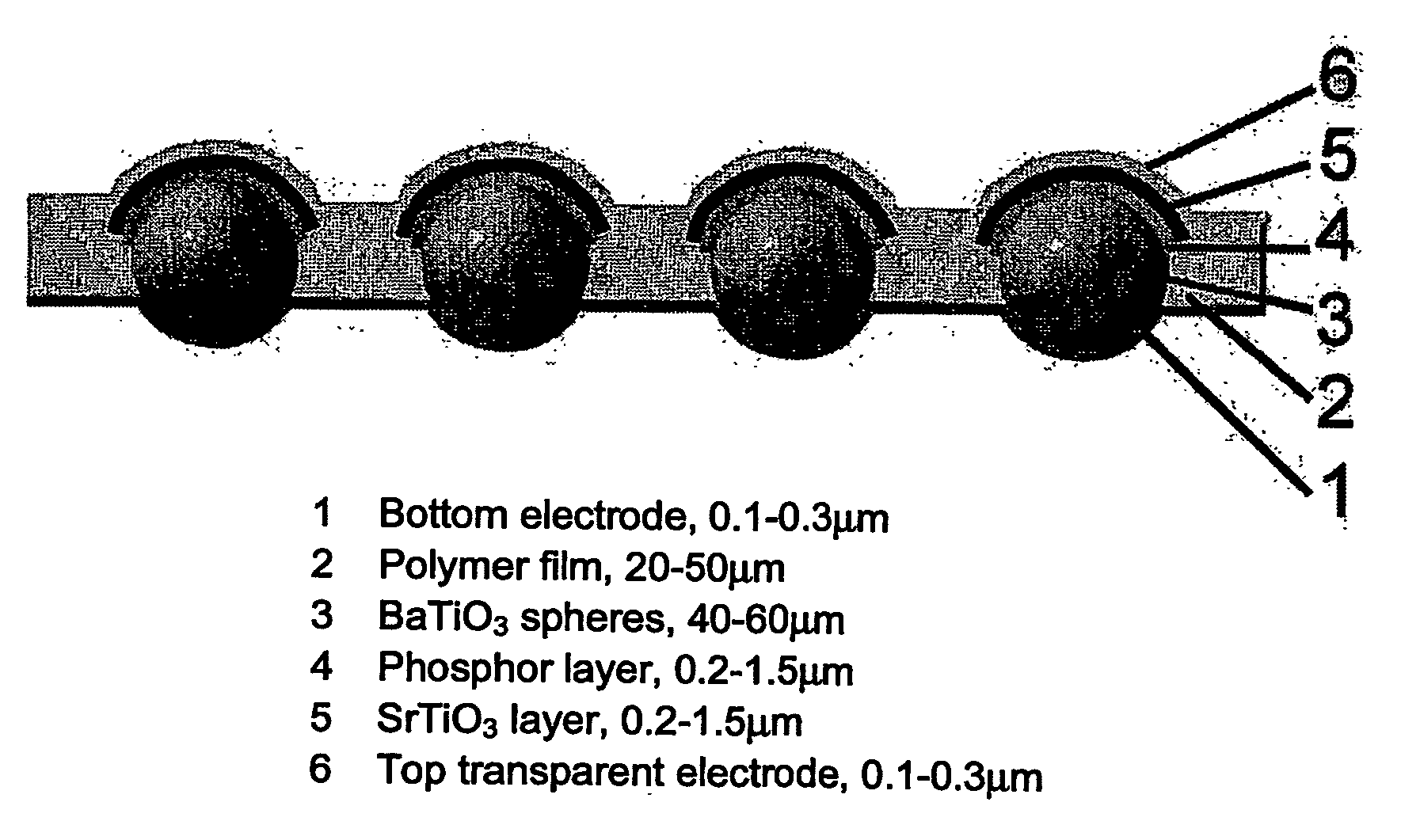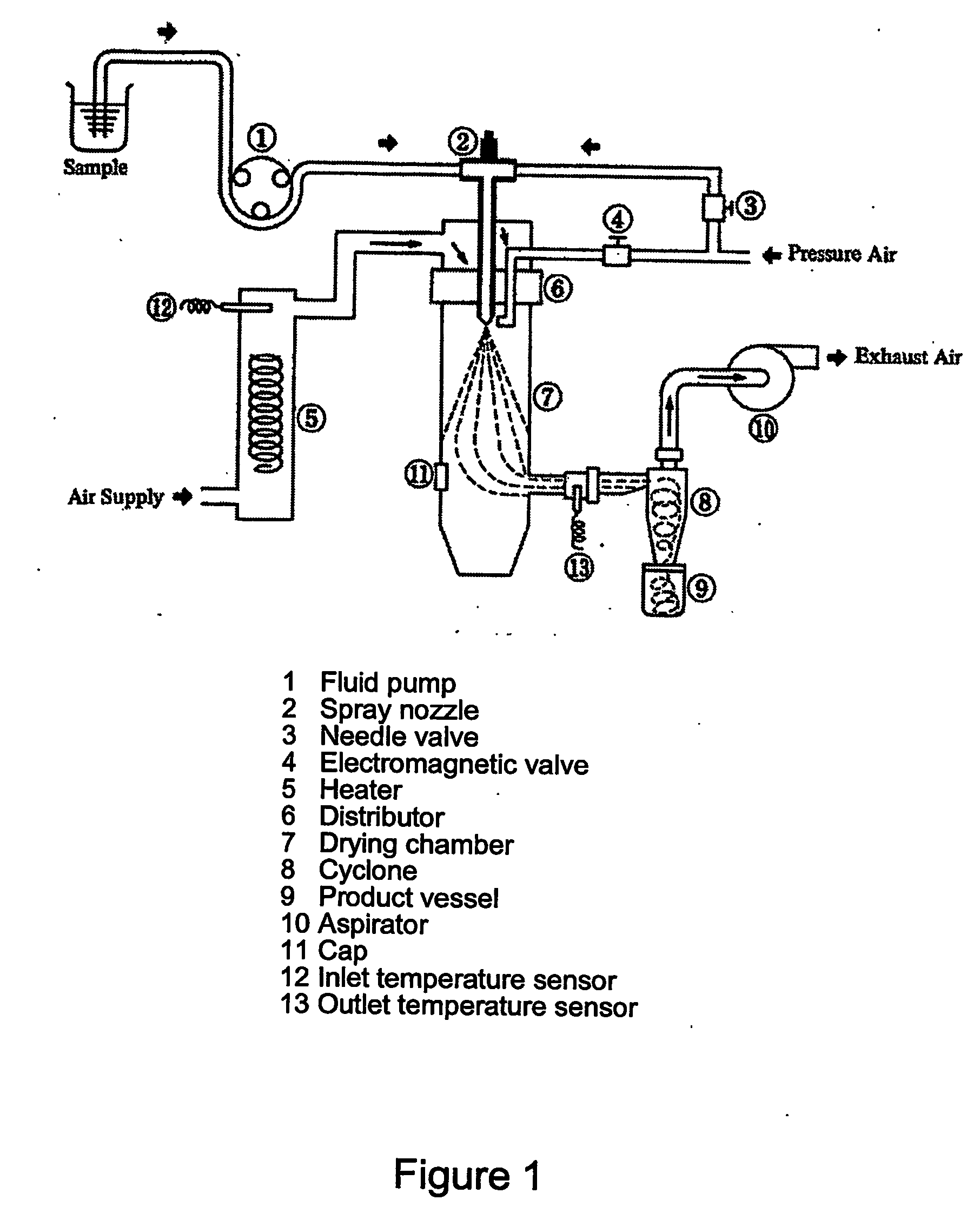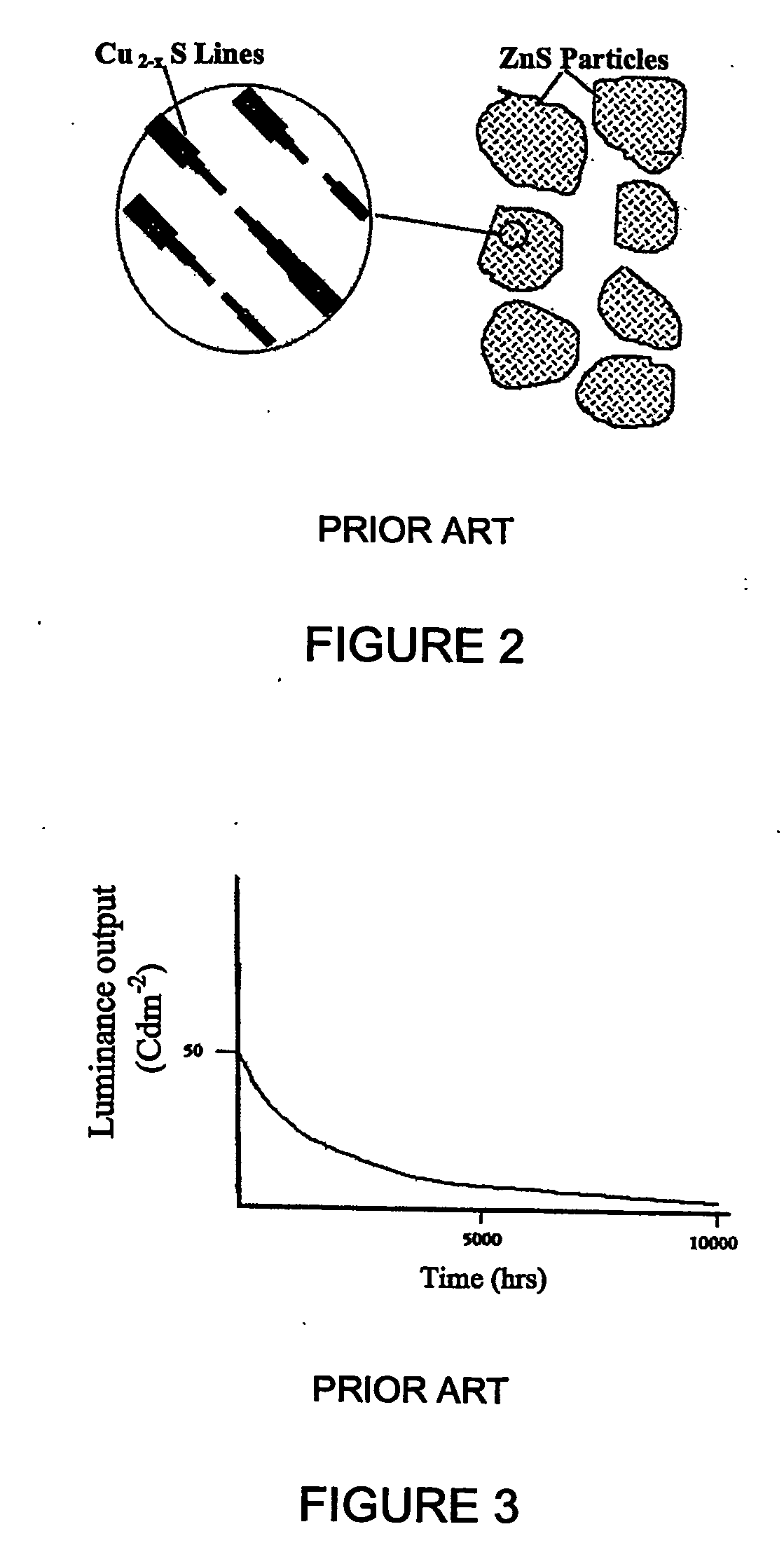Sphere-supported thin film phosphor electroluminescent devices
a phosphor electroluminescent and sphere-supported technology, applied in solid-state devices, discharge tubes/lamp details, light sources, etc., can solve the problems of difficult formation of high dielectric constant insulating jayers, not all materials offer sufficient chemical stability and compatibility in the presence of high processing temperatures
- Summary
- Abstract
- Description
- Claims
- Application Information
AI Technical Summary
Benefits of technology
Problems solved by technology
Method used
Image
Examples
Embodiment Construction
[0060] The inventors have shown for the first time that thin film phosphor electroluminescent devices can be prepared using dielectric spheres, preferably BaTiO3 spheres for electroluminescent (EL) display applications. The device possesses a novel structure and is prepared through a special processing route in order to perform high temperature annealing processes required before applying the spheres into a low temperature substrate.
[0061]FIG. 5 shows the schematic diagram of the proposed structure of the Sphere-Supported Thin Film Electroluminescent (SSTFEL) device. A phosphor layer 4 is deposited onto the top surface of BaTiO3 spheres 3. In a preferred embodiment a thin SrTiO3 layer 5 is deposited onto the phosphor layer for effective charge injection into the phosphor layer. The BaTiO3 spheres are embedded within a polymer layer 2 with the top and bottom areas of the BaTiO3 spheres exposed. The top area of the BaTiO3 spheres and the surrounding polymer is coated with transparent...
PUM
| Property | Measurement | Unit |
|---|---|---|
| relative permittivity | aaaaa | aaaaa |
| relative permittivity | aaaaa | aaaaa |
| diameter | aaaaa | aaaaa |
Abstract
Description
Claims
Application Information
 Login to View More
Login to View More - R&D
- Intellectual Property
- Life Sciences
- Materials
- Tech Scout
- Unparalleled Data Quality
- Higher Quality Content
- 60% Fewer Hallucinations
Browse by: Latest US Patents, China's latest patents, Technical Efficacy Thesaurus, Application Domain, Technology Topic, Popular Technical Reports.
© 2025 PatSnap. All rights reserved.Legal|Privacy policy|Modern Slavery Act Transparency Statement|Sitemap|About US| Contact US: help@patsnap.com



